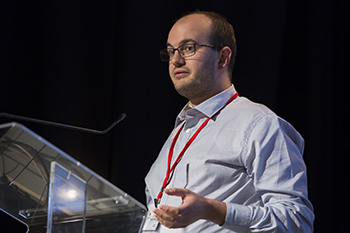Impact of polyvinylchloride and polyurethane infusion set upon infliximab sorption
24 October 2018
Nicolas Tokhadzé , Philip Chennell, Valérie Sautou Université Clermont Auvergne, CHU CLERMONT FERRAND, CNRS, SIGMA Clermont, ICCF, F-63000 CLERMONT-FERRAND, France
Objectives
Infliximab diluted solutions have been shown to be physicochemically stable for long periods, however the sorption of infliximab during infusions has not been readily investigated. This study aimed to investigate potential sorption phenomena of infliximab during administration through Polyvinylchloride (PVC) and Polyurethane (PU) infusion sets.
Materials and methods
Infliximab (INFLECTRA®) solutions at 0.4 mg/mL and 2 mg/mL were submitted to static (at T0, 24h and 96h) and dynamic contact (flow rate = 2 mL/min during 2 hours with analysis times at T0, 5 min, 30 min, 60 min and 120 min) with three different infusion sets: Codan V86-IV STAR (TOTM plasticized PVC tubing), Doran KIS04F (TOTM plasticized PVC tubing) and Carefusion PERFUSEND A96 (PU tubing). The static condition was representative of a worst case scenario where contact between the drug and the material was at maximum, while the dynamic condition simulated a clinical use situation with infliximab at maximum and minimum usable concentrations. Infliximab was quantified at each analytical time by protein total quantification using UV-spectroscopy according to European Pharmacopeia Monography (2.5.33) and size exclusion chromatography (SEC) which allowed a specific quantification of the monomeric form and was able to highlight potential modification such as aggregation or oligomer formation.
Results
In static condition, infliximab concentrations at initial state were respectively of 0.360 ± 0.005 mg/mL and 1.921 ± 0.026 mg/mL for the 0.4 and 2 mg/mL conditions when assessed by SEC and of 0.375 ± 0.006 and 1.889 ± 0.040 mg/mL when assessed by UV spectroscopy. In dynamic condition, infliximab initial concentrations were of 0.364 ± 0.005 and 1.873 ± 0.012 when assessed by SEC and 0.377 ± 0.005 and 1.861 ± 0.012 mg/mL when assessed by UV spectroscopy. For all analysis times and conditions, infliximab concentrations remained unchanged with a maximum variation of 2.81% and 4.63% from the initial concentrations assessed by SEC and UV spectroscopy and the percentage of monomeric form remained unaltered.
Discussion – Conclusion
Our study showed that there was no clinically relevant loss of infliximab, however a sorption phenomenon cannot be excluded and a surface study of the infusion set would be needed to investigate this hypothesis.
According to these results each of the three infusion sets could be used for the administration of INFLECTRA® solutions without causing any loss of active substance.